Nestled within the quiet town of West Bend, Iowa, is a sanctuary that uniquely blends faith, art, and nature. Known as The Shrine of the Grotto of Redemption, it is one of Iowa’s best-kept secrets, an awe-inspiring landmark that stands as one of the largest manmade grottos in the world. It’s something you need to see at least once to believe it exists the heartland.
Disclosure: This post may contain affiliate links. At no extra cost to you, I will earn a commission if you click through and make a purchase.
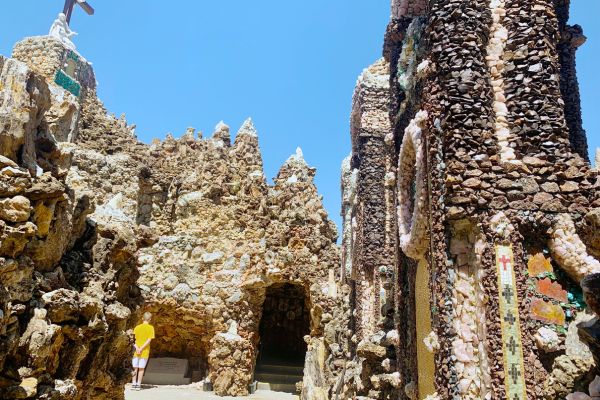
Constructed primarily from minerals, fossils, and semiprecious gemstones, the grotto is an intricate mosaic of vibrant colors and textures, breathing life into the age-old Biblical stories it depicts. It’s an architectural wonder spearheaded by Father Paul Matthias Dobberstein. And as such, it’s also a significant tourist draw to an otherwise quiet town.
This blog post aims to delve into the fascinating history of The Shrine of the Grotto of Redemption, explore its rich architectural and spiritual symbolism, and shed light on its enduring significance for Iowa and beyond. Even if you’re simply a curious traveler, you’ll be intrigued by the grotto’s unique story. I know my family and I were!
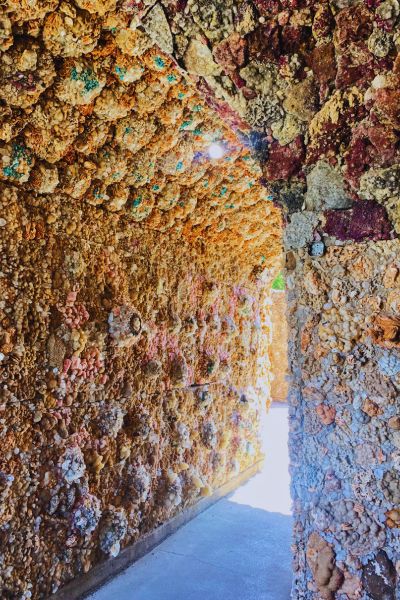
The History of the Grotto of Redemption
A German immigrant and devout Catholic priest, Father Dobberstein arrived in West Bend, Iowa, at around 1898. The story goes that when Dobberstein was in seminary, he became terribly sick with pneumonia. During that time he vowed to the Blessed Virgin Mary: If he were to survive, he would construct a shrine in her honor.
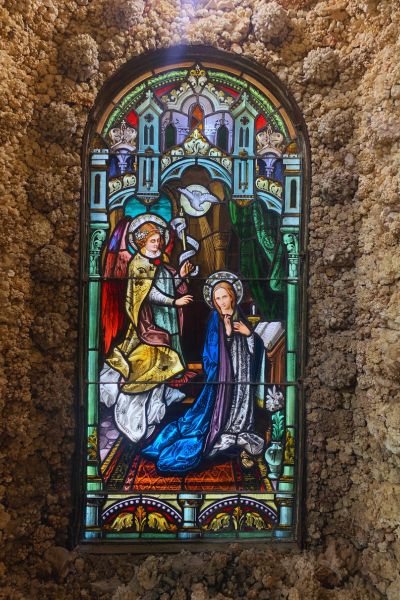
He recovered, and he finished his studies and became a priest. And he started stockpiling rocks and precious stones. In 1912, he became to build that shrine.
For more than 40 years, Father Dobberstein worked on his project. The materials he used were quite unique: Petrified wood, malachite, azurite, agates, geodes, jasper, quartz, topaz, calcite, stalactites, and stalagmites to name a few. It’s said that he was meticulous about which semiprecious gemstones he’d use, and according to the shrine’s website on its history: “he was determined to make the most of material beauty and to emphasize the spiritual beauty of the woman he had in mind.”
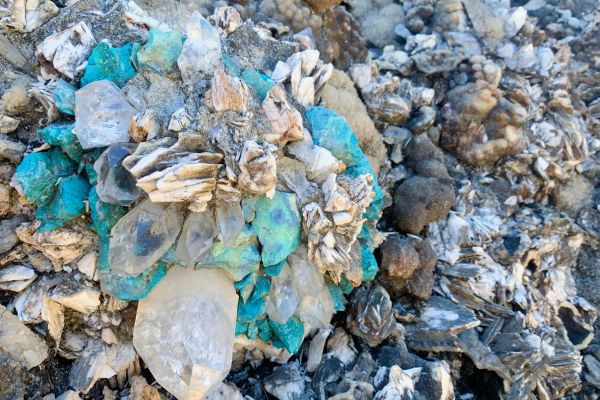
Father Dobberstein has some help, though it wasn’t as large of a team as one would suspect. It was pretty much him and one other man for several decades. Matt Szerensce began helping with construction as a young man. He’d spend 52 years as a full-time grotto collaborator.
Eventually, a new priest was sent to West Bend to assume Father Dobberstein’s clerical duties, as well as to assist with the ongoing building project. At the time, Dobberstein was 74. The new priest, Father Greving, made some valuable contributions to the project, particularly bringing in an electric hoist instead of doing all the lifting by hand, as they’d been doing since the beginning.
Dobberstein continued to work on the grotto, alongside Greving and Szerensce, for another eight years. He passed away in 1954.
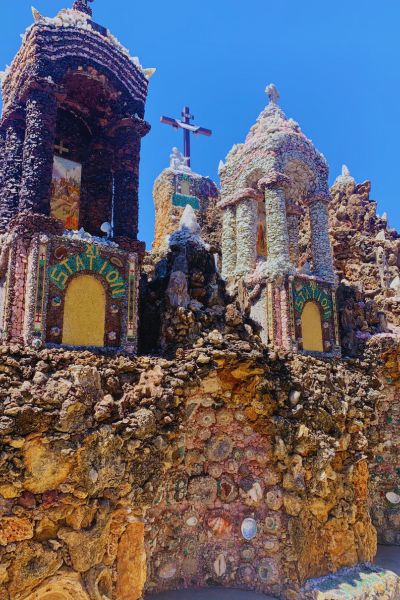
Greving continued to serve in West Bend and build on Dobberstein’s vision for 42 years. Thanks to the work of those men, and the community who assisted and donated materials, the grotto now brings in about 100,000 tourists annually.
Visiting the Grotto of Redemption
The Grotto of Redemption is located in West Bend, Iowa. It’s open year-round and can be visited 24/7. The gift shop and museum, however, maintain more typical hours of operation:
- Labor Day – April 30 | 9 a.m. to 4 p.m.
- May 1 – Labor Day | 9 a.m. to 6 p.m.
- Closed in January
** Hours are subject to change.
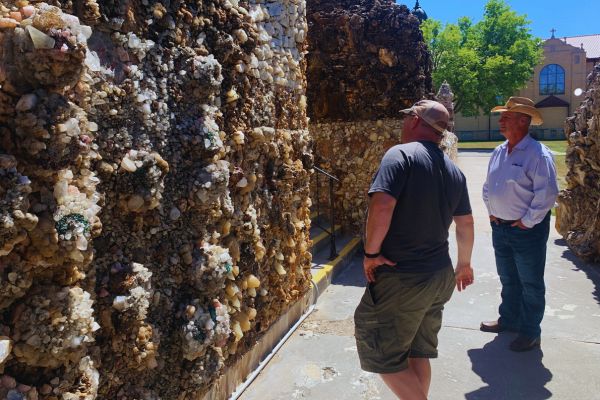
Best Times to Visit
While the grotto is open all year, the best time to visit is during the warmer months, from late spring to early fall. During this time, the grotto’s gardens are in full bloom. Just keep in mind that summer in Iowa can be sweltering! I’ve heard the grotto is charming during the winter season when snow coats the structures.
For the religious, a visit to the grotto inspires self-reflection. The symbolism found throughout the grotto tell a story. Guided tours are available and recommended for first-time visitors to fully understand the historical, spiritual, and geological significance of the site. Group tours can be arranged, and they recommend allowing about three hours for the tour, lunch, and a stop at the museum and gift shop.
Tip: Don’t forget your camera. The grotto has several photo opportunities.
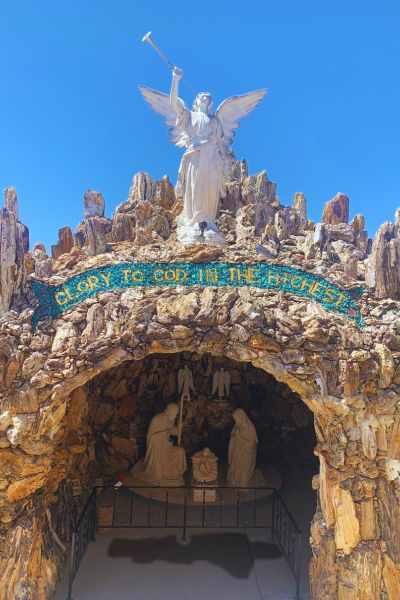
The Grotto of Redemption is mostly accessible to visitors with mobility issues. There are paths around the Grotto that can accommodate wheelchairs and walkers, but know that the paths are natural terrain/gravel. Given the age of the site, some areas might be challenging to access for those with severe mobility limitations. It’s always a good idea to contact the grotto ahead of time if you have specific accessibility concerns.
The Grotto of Redemption is more than an architectural marvel or a religious site; it is a celebration of faith, a testament to human dedication. It’s an unexpected attraction in a small town, making a visit all the more memorable.